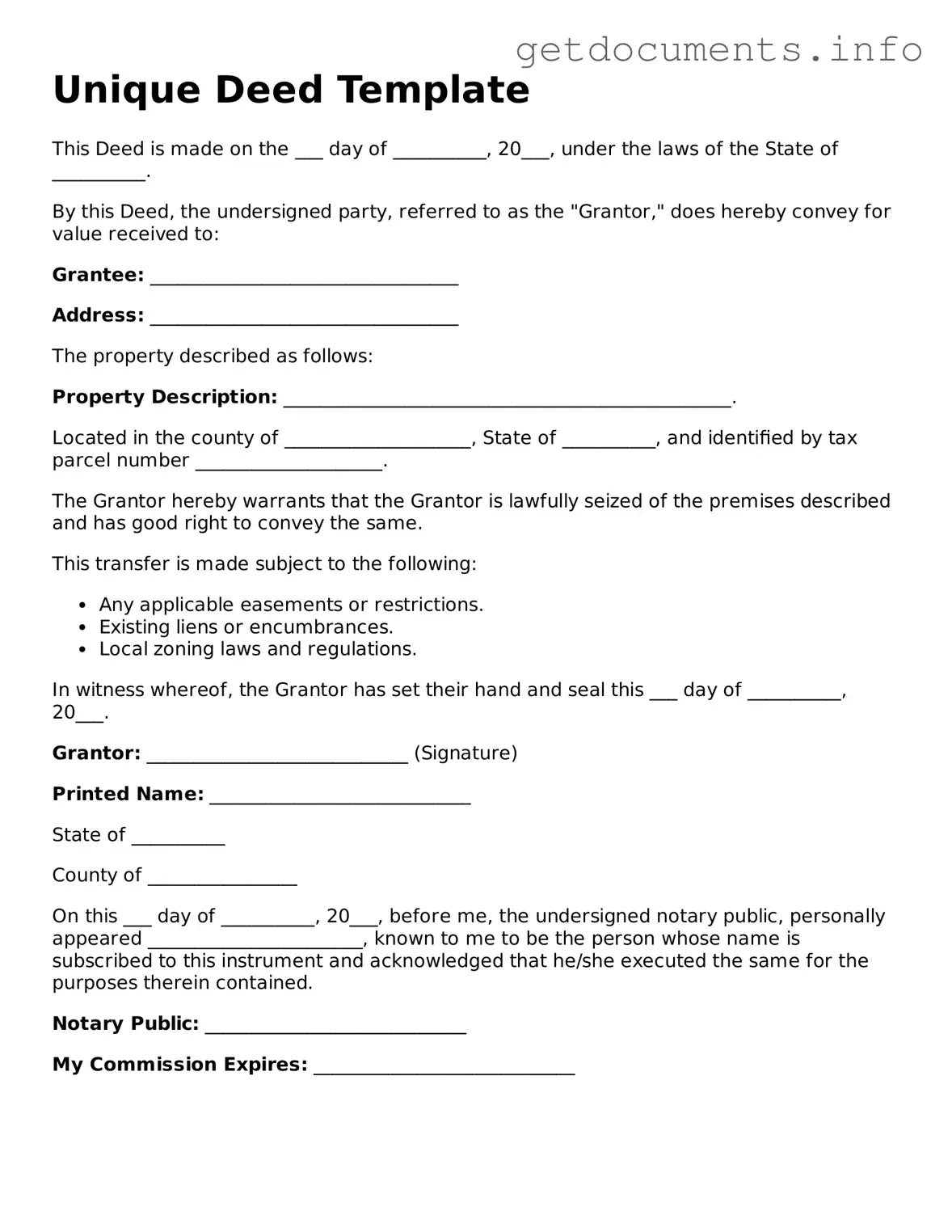The Deed form serves as a crucial document in real estate transactions, establishing the transfer of property ownership from one party to another. It outlines essential details such as the names of the grantor and grantee, a legal description of the property, and any conditions or restrictions associated with the transfer. This form also typically includes the date of the transaction, which marks the official transfer of rights. In addition, the Deed may require signatures from both parties and, in some cases, a witness or notary public to validate the agreement. Understanding the components of the Deed form is vital for anyone involved in property transactions, as it ensures that the transfer is legally recognized and protects the interests of both the buyer and seller. By adhering to the required legal standards, the Deed form minimizes disputes and clarifies ownership rights, making it an indispensable part of real estate dealings.
